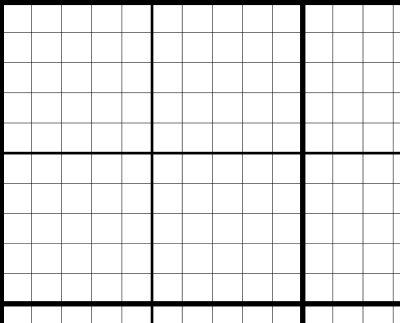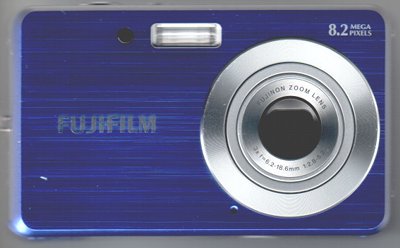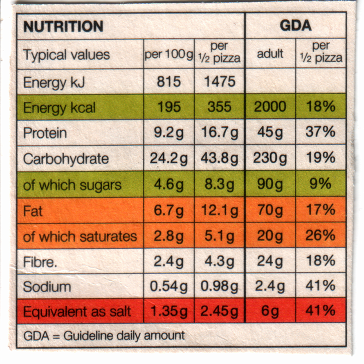March 15th, 2009

I’ve used the incompetech multiwidth graph paper generator to make a PDF file with A3 size page ruled with 10 by 14 large squares, each divided into 2 smaller squares and 10 very small squares. This file is an enlarged version of the normalA4 sized 20mm, 10mm and 2mm graph paper.
To make the A3 sheet, I used 0.3536 lines per cm for the thickest lines (1 point), twice that (0.7071) for the middle thickness lines and 3.536 lines per cm for the finest. I chose a black line colour and made the middle lines 0.5pt and the fine lines 0.1pt thick. This grid will be printed on A3 light blue paper to help a student with eyesight issues. As the number of squares is exactly the same as the A4 paper that other students use, so the same scales can be used.
The incompetech graph paper generator has a wide choice of grids and parameters. Its helpful to be able to customise and print graph paper when you need it, and I like being able to save the PDF files for future use.
Posted in ILT | Comments Off
March 9th, 2009
Download a jqz file with 8 questions about rearranging digits to make the largest and smallest numbers. You can also save a Web page with the questions about rearranging digits and use that with students.
As usual, I have set the HotPotatoes options to remove all the buttons (the quizzes open in new windows in Moodle), and I have set the options to shuffle the question order and to shuffle the order of the answers each time the Web page is loaded. As each 20 Minute quiz is short and deals with a single topic, this seems to make sense to me.
Part of the 20 Minute e-learning project.
Posted in 20 minutes, Maths | Comments Off
March 8th, 2009
Posted in Notes | Comments Off
March 8th, 2009

Bought a new Fujifilm point and shoot digital camera today. Its a cheerful bright blue with a brushed metal look that the scanner emphasises above.
This device replaces my camera phone (phone got pinched, not from college premises) and is small enough to stay in the messenger bag. I use a digital camera to record (traditional) whiteboards, and to record student work using the macro mode. The results can be popped into PowerPoint for the next lesson, or even in the current lesson with a USB cable or laptop with card reader connected to the projector. Sort of low tech classroom visualiser.
Some daffodils…

A picture of some daffodils that are wilting a bit now, full frame scaled to 400px wide (from 3264 px)

Central part of the daffodil frame cropped out and scaled to 400px wide. Notice how the bell of the flower is slightly in front of the plane of focus. Depth of field is limited at the maximum f/2.8 aperture (low light levels).

Full resolution crop from the very centre of the daffodil (stamens?) with some brightening and contrast enhancement. This is on the ‘default’ image quality setting, hand held (the camera display was showing a ‘shake warning’). There is a finer image quality setting available in the largest resolution, and there is a tripod fitting.
Things I don’t like… You have to take the battery out to charge it. I know this is pretty standard with digital cameras, but still means a lot of taking out and putting back of the battery. The same hatch contains battery and SD card, and the lid is made of plastic (the rest of the case is thin alloy) so might be a wear point. A usb lead is provided so no need to transfer images using the card all the time. The flash and macro modes are not remembered when you switch the camera off. This is typical of point and shoot cameras I understand. No viewfinder, but I’m getting used to the LCD panels.
Posted in ILT, Photos | Comments Off
March 7th, 2009
Clarinet Quintet in A Major, K. 581: I. Allegro – Sorokin, Oistrakh, Bondarenko, Terian, Knushevitsky
Just to see what happens… iMeem allows you to embed a music stream in your blog or Web site. The service appears to be paid for by some advertising that is embedded in the player above. Currently playing is the Allegro from Mozart’s Clarinet Quintet in A Major, K. 581. Alas they don’t have Benny Goodman’s version with the Budapest Quartet.
Posted in Notes | Comments Off
March 4th, 2009

The students have realised why I’m YouTubing certain parts of the Maths course… I’ll do some more over the weekend.
Posted in Notes, Web | Comments Off
March 1st, 2009

The nutrition information tables on the back of most prepared foods can provide a variety of Maths/Numeracy lessons with a healthy eating message. Above is the scan of a nice chargrilled vegetable and pesto pizza. No crisps when your having this – the pizza supplies the just under half the guideline daily amount of salt in one portion! 26% of saturated fat was less than I was expecting, given the Parmesan cheese liberally covering the base.
My real shock was that a single full butter croissant contains 41% of your daily saturated fat intake, more than a serving of apple pie. Less of those croissants, as the Food Standards Agency is encouraging us to cut down on the saturated fat. I’ve always been fond of bagels, and they have much less fat.
The ‘traffic light’ labeling does help spot the higher quantities of salt and saturated fat – the red sodium line in the pizza above stands out OK.
Posted in Forensic, Maths | Comments Off






